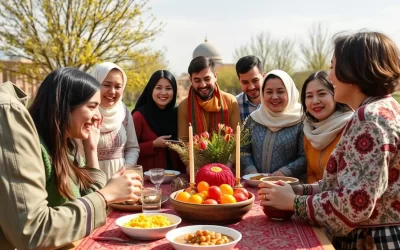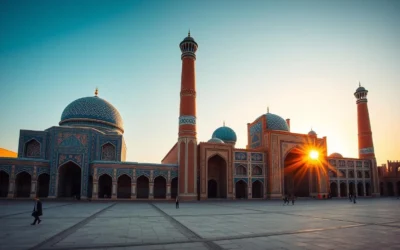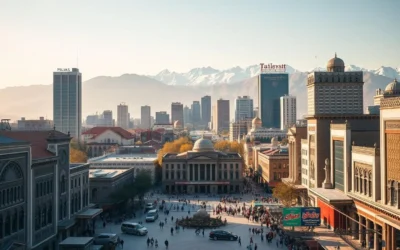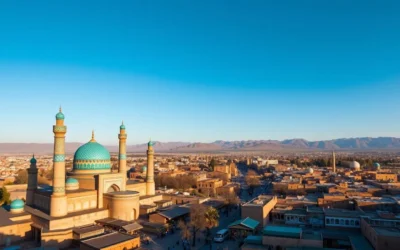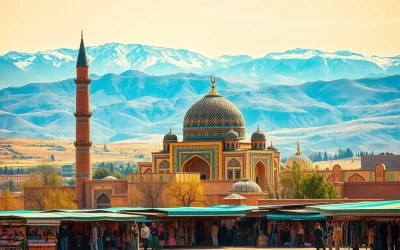✓ Accommodations ✓ Flights ✓ Rental Cars ✓ Tours & Activities
In this country, language plays a vital role in shaping its culture and daily life. Uzbek, the official language, is spoken by approximately 85% of the population, making it the most widely used form of communication. This linguistic dominance reflects the country’s rich heritage and its connection to the Turkic language family.
While Uzbek is the primary language spoken, other languages like Russian and Tajik also hold significance. Russian, for instance, is understood by over half of the population, especially in urban areas. This diversity showcases the country’s historical ties and modern adaptability.
With 11 active languages, the country’s linguistic landscape is both vibrant and complex. Whether you’re exploring its cities or rural areas, you’ll find that language is a bridge connecting its diverse population. Let’s dive deeper into this fascinating topic.
Understanding Uzbekistan’s Linguistic Landscape
Central Asia’s diverse heritage is deeply embedded in its languages. This region has been a crossroads of civilizations for centuries, where every person contributes to a unique cultural mosaic. The Silk Road, a historic trade route, played a pivotal role in shaping the linguistic and cultural identity of this area.
Exploring the Rich Cultural Tapestry
The culture of Central Asia is a blend of traditions from various group identities. Over time, these interactions have influenced the way people communicate. For example, the Turkic language family, which includes Uzbek, reflects the region’s historical ties to nomadic tribes.
Trade routes not only brought goods but also ideas, creating a melting pot of languages. This exchange has left a lasting impact on the region’s linguistic diversity. Today, you can see how these influences continue to shape everyday communication.
Historical Influences on Language Development
Historical events have played a significant role in language evolution. The Silk Road, for instance, connected Central Asia to the rest of the world, fostering cultural and linguistic exchanges. This interaction led to the adoption of new words and phrases, enriching local dialects.
Another key factor is the region’s history of conquests and migrations. Each wave of settlers brought their own languages, which blended with existing ones. This process has created a complex yet fascinating linguistic landscape.
| Factor | Impact on Language |
|---|---|
| Silk Road | Cultural and linguistic exchange |
| Migrations | Blending of dialects |
| Trade | Adoption of new vocabulary |
Understanding these influences helps you appreciate the vibrant legacy of Central Asia. The region’s languages are not just tools for communication but also windows into its rich culture and history.
Uzbekistan: Official and widely spoken languages
Language serves as a powerful reflection of national pride and heritage. In this region, the Uzbek language stands as a symbol of unity and identity. Spoken by about 85% of the population, it is the official state language and a cornerstone of cultural expression.
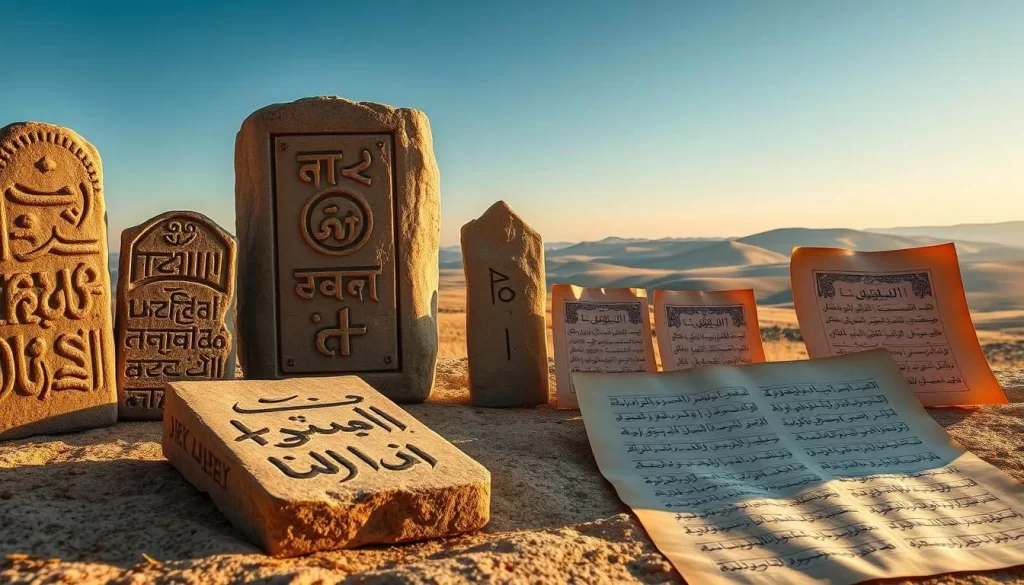
Uzbek: The Official State Language
The Uzbek language belongs to the Turkic family, closely related to Uyghur and Kazakh. Its widespread use highlights its role in daily life, education, and governance. For many, it represents a connection to their roots and a source of national pride.
As the primary mode of communication, Uzbek is taught in schools and used in official documents. Its dominance reflects the country’s commitment to preserving its linguistic heritage. This dedication ensures that future generations remain connected to their cultural identity.
Script Evolution: From Cyrillic to Latin
The transition from the Cyrillic alphabet to the Latin script marks a significant chapter in the language’s history. This shift began in the 1990s and continues to shape modern education. Today, schools exclusively teach the Latin alphabet, symbolizing a move toward modernization.
For older generations, the Cyrillic script remains familiar, often used in newspapers and personal writings. However, the adoption of the Latin script reflects a broader effort to align with global standards. This change also simplifies learning for younger students, fostering a deeper connection to their language.
“The evolution of a script is more than a technical change—it’s a cultural transformation.”
Understanding this journey helps you appreciate the resilience and adaptability of the Uzbek language. It’s not just a tool for communication but a testament to the nation’s enduring spirit.
The Role of Russian and Persian in Uzbekistan
Every word spoken here tells a story of connection and adaptation. While Uzbek dominates as the primary language, the russian language and Persian also play significant roles. These languages are not just tools for communication but also markers of cultural identity.

Russian as the De Facto Second Language
Although not formally declared an official language, Russian is deeply embedded in public life. It serves as a key medium for interethnic communication, especially in urban areas. Over half of the population understands Russian, making it a vital part of daily interactions.
In major city centers, Russian is often the preferred language for business, science, and governance. This reflects its historical influence and practicality in a multilingual society. For many, being a speaker of Russian opens doors to broader opportunities.
Cultural Impact of Persian in Key Cities
Persian, particularly in the form of Tajik, has left a lasting mark on certain regions. In city centers like Bukhara and Samarkand, Persian-based dialects are widely spoken. These areas showcase a unique blend of linguistic traditions, where every word carries echoes of history.
The influence of Persian extends beyond language, shaping local art, literature, and customs. This cultural richness highlights the region’s role as a historical crossroads. Understanding these dialect variations offers a deeper appreciation of the area’s heritage.
| Language | Role |
|---|---|
| Russian | Interethnic communication, business, and governance |
| Persian | Cultural and historical influence in key cities |
Exploring these languages reveals how they shape identity and foster connections. Whether in a bustling city or a quiet village, every speaker contributes to this vibrant linguistic mosaic.
Embracing Linguistic Diversity and Minority Languages
The linguistic landscape here is a vibrant tapestry of traditions and dialects. Beyond the dominant tongue, a variety of Turkic languages and regional dialects enrich the cultural fabric. These minority tongues are not just tools for communication but also markers of identity and heritage.

Turkic Languages and Regional Dialects
The Turkic language family extends beyond the primary tongue, encompassing dialects like Kazakh and Karakalpak. In the area of Karakalpakstan, for instance, Kazakh is predominantly spoken by the local ethnic group. These dialects add depth to the region’s linguistic mosaic, reflecting centuries of cultural exchange.
Everyday life in these regions is shaped by the use of these dialects. From marketplaces to family gatherings, they serve as a bridge connecting communities. This linguistic diversity highlights the region’s adaptability and resilience.
Minority Language Communities
Minority languages thrive in specific areas, where they play a vital role in preserving cultural identity. For example, Tajik is widely spoken in Bukhara and Samarkand, reflecting the region’s historical ties to Persian culture. The number of speakers in these communities showcases the enduring significance of these tongues.
Efforts to preserve minority languages include bilingual education programs and cultural festivals. These initiatives ensure that future generations remain connected to their roots. By celebrating linguistic diversity, the region fosters interethnic dialogue and mutual respect.
| Language | Region | Significance |
|---|---|---|
| Kazakh | Karakalpakstan | Predominant among the Kazakh ethnic group |
| Tajik | Bukhara, Samarkand | Reflects Persian cultural influence |
Understanding these linguistic dynamics helps you appreciate the region’s rich heritage. Whether in urban centers or rural villages, every area tells a story of unity in diversity. For more insights on linguistic diversity in education, explore this resource.
Language Evolution and Its Impact on Education and Daily Life
The evolution of language shapes not only communication but also the identity of a nation. Over the years, script reforms have played a pivotal role in shaping education and daily interactions. These changes reflect a broader effort to modernize and align with global standards.

Modern Script Reforms in Schools
Since 1993, the shift from the Cyrillic to the Latin alphabet has been a significant milestone. This transition symbolizes independence and a move toward building a strong national identity. For the younger generation, the Latin script simplifies learning and fosters a deeper connection to their language.
However, the phased introduction of the Latin alphabet has faced delays, with the full implementation date being postponed three times. This dual-script situation has led to challenges in literacy, particularly among young people. Efforts are underway to improve oral and written skills, ensuring that students are well-equipped for the future.
- Alphabet reforms have redefined the educational landscape, making learning more accessible.
- Key year milestones highlight the progression from Cyrillic to Latin script.
- These changes empower the new generation with modern communication skills.
Educational reforms are also addressing curriculum changes, ensuring that teaching practices align with the new script. For example, bilingual education programs are being introduced to bridge the gap between different linguistic groups. These initiatives aim to enhance literacy and foster interethnic dialogue.
Understanding these reforms helps you appreciate the resilience and adaptability of the language. It’s not just a tool for communication but a testament to the nation’s enduring spirit. For more insights on linguistic diversity in education, explore this resource.
Conclusion
The linguistic landscape of this region reflects a rich tapestry of history and culture. Uzbek, as the official language, stands at the heart of national identity, spoken by millions across the country. Its evolution, from script reforms to modern usage, highlights its resilience and adaptability.
Historical influences, such as the Silk Road, have shaped the region’s diverse dialects. Minority tongues like Tajik and Kazakh add depth to this vibrant mosaic. These languages are not just tools for communication but also markers of cultural heritage.
Script transitions, particularly the shift to the Latin alphabet, symbolize modernization efforts. This change aims to simplify learning for younger generations while preserving cultural roots. Understanding these dynamics offers insight into the region’s progress and challenges.
To explore more about how language shapes identity, visit this resource. Discover the fascinating interplay between tradition and modernity in this unique linguistic journey.
The above is subject to change.
Check back often to TRAVEL.COM for the latest travel tips and deals.
Here are some Tours & Sightseeing suggestions that might pique your interests!

